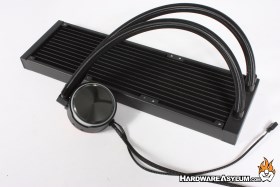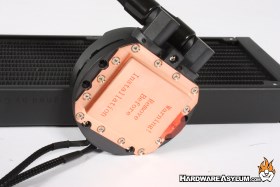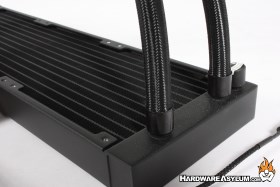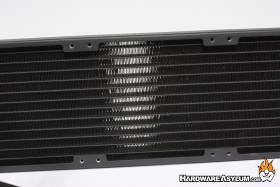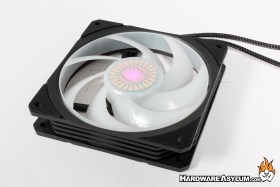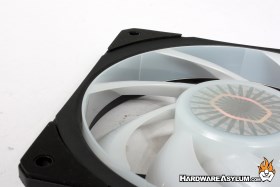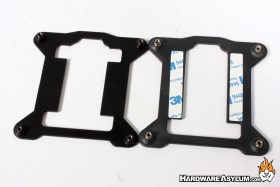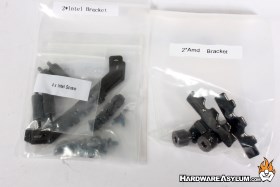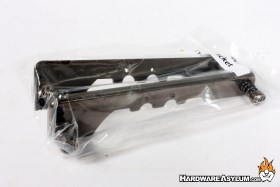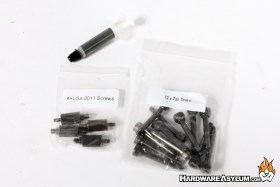Cooler Master MasterLiquid PL360 Flux AIO Cooler Review
Author: Dennis GarciaIntroduction
One of the biggest detractors to AIO cooling is the size of the pump block. As you can imagine, larger AIOs typically offer better performance due to there being more room to include a more powerful pump and larger cold plate. Funny thing is, size is just an illusion and while there are plenty of good AIOs on the market there are even more that trick you into believing they are good on size alone.
In this review we will be looking at the Cooler Master MasterLiquid PL360 Flux. This is a revolutionary change to the Cooler Master AIO lineup that is dedicated to performance to deliver precisely tuned performance for superior heat dissipation and cooling capabilities.
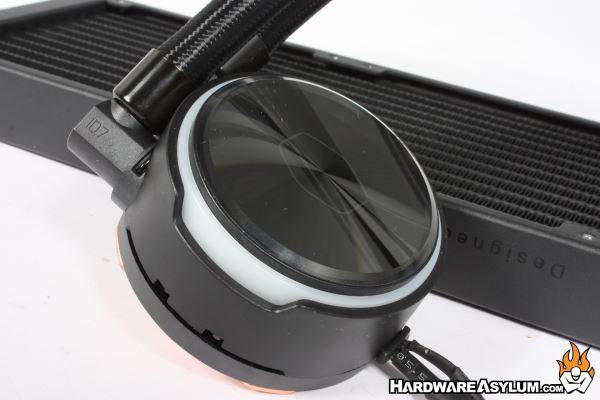
That is marketing speak for, “This is a new cooler design and it seems pretty good”
When it comes to water cooling there are two major variables to consider.
1) How heat is transferred to the liquid.
2) How heat is transferred from the liquid to the air.
The concept is easy enough to understand however the trick is finding a balance that doesn’t negatively impact overall performance.
For AIO coolers the intent is to provide a cooling solution that provides better performance over standard aircooling while offering a cost and labor savings over a full DIY watercooling loop. To accomplish this many of the components are combined and, when distilled down into simply a basic pump block and radiator.
The Masterliquid PL360 features a new dual chamber pump design that is more compact than previous generations without impacting performance. The high-speed motor features a ceramic bearing impeller to help provide balanced waterflow and thermal performance by targeting hot spots using a larger microchannel cold plate.
You will notice that the copper cold plate features a raised mounting surface with familiar perimeter mounting screws. The extra mass directly over the CPU helps in thermal capacity and heat transfer. Both being primary considerations when selecting a cooler for a high wattage CPU.
On older Cooler Master AIO heatsinks the radiator was so densely packed that they required high-pressure fans to work effectively. This increased noise and didn’t really increase overall performance. The radiator featured on the PL360 features twelve water channels and a good number of cooling fins to help dissipate heat. It would appear that Cooler Master has discovered the balance between better flow and thermal dissipation.
Maybe one of the most conflicted features of the MasterLiquid PL360 are the redesigned Flux Series Fans. These fans feature translucent blades with ARGB lights in the center hub and do a great job at illuminating the entire fan including the edge ring.
In my experience anytime a company builds a fan with an edge ring they are doing this for two reasons.
First, they feel by blocking off the edges of the blades they will reduce noise and boost flow. While this might be true, I can think of two fan makers who would argue against that logic.
The second reason is focused on strength, by adding an edge ring you tie all of the fan blades together making the entire unit stronger which begs the question. “Why did you need to make the fan stronger??” Plenty of fans spin at extremely high speeds and have no edge ring so what makes this fan different?
With the Masterliquid PL360 Flux you will get everything you need to install the cooler on any modern motherboard including the new Alder Lake LGA1700 CPUs. This is accomplished with a special backplate while still using the standard universal installation kit.
You also get mounting brackets for TRX40 Threadripper and the aging LGA 20XX series.
Like with other ARGB enabled Cooler Master coolers you will get an optional ARGB control box for systems that don’t have a dedicated ARGB controller. It might be hard to believe but, there are still plenty of motherboards out there without ARGB support.

